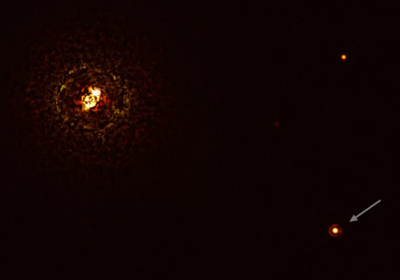b Centauri b: Contradicts our Assumption – How Planets are Formed?
- 11 Dec 2021
A giant exoplanet, or planet located outside of our Solar System, was discovered orbiting b Centauri, a stellar pair located 325 light-years from Earth in the Centaurus constellation.
- This is the hottest and most massive planet-hosting star system found so far.

(Image Source: Space.com)
Why it matters? It defies our Assumption of Planet Formation
Earlier Assumption
- What scientists know about Planet formation is – it occurs around a wide range of stellar masses and stellar system architectures.
- The earlier studies of planets in close-in orbits around high-mass stars have revealed an increase in giant planet frequency with increasing stellar mass until a turnover point at 1.9 solar masses, above which the frequency rapidly decreases. This could potentially imply that planet formation is impeded around more massive stars, and that giant planets around stars exceeding 3 solar masses may be rare or non-existent.
The Recent Find
- Recently scientists have found existence of a planet at 560 times the Sun-Earth distance from the 6—10 solar mass binary bCentauri through direct imaging.
- The planet-to-star mass ratio of 0.10—0.17% is similar to the Jupiter-Sun ratio, but the orbital separation of the detected planet is approximately 100 times wider than that of Jupiter.
- This shows that planets can reside in much more massive stellar systems than what would be expected from extrapolation of previous results for close-in planets.
| b Centauri System
|




